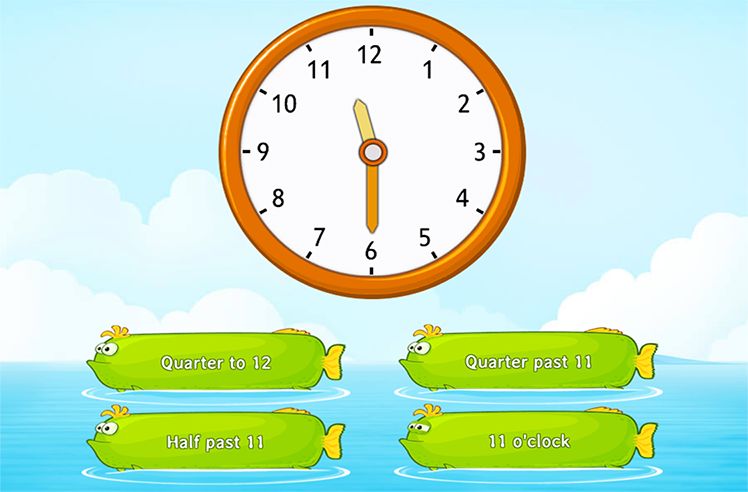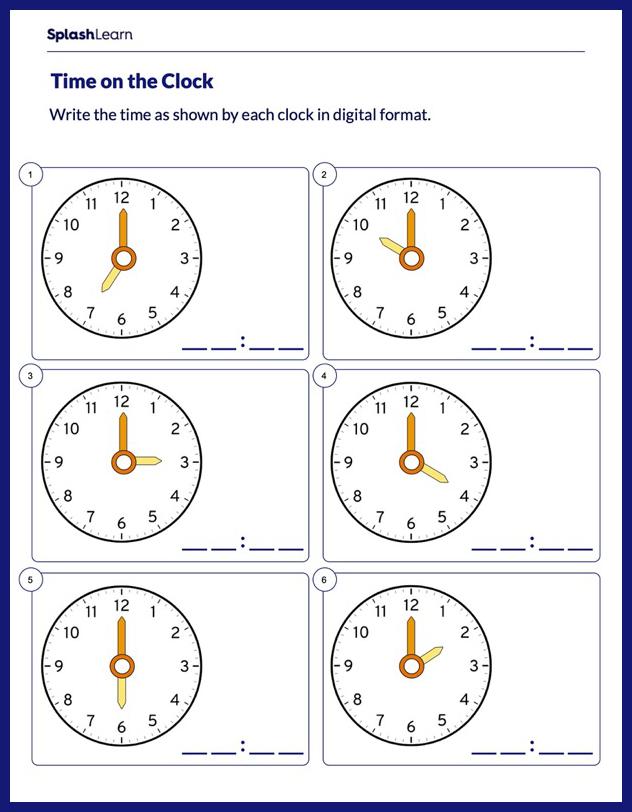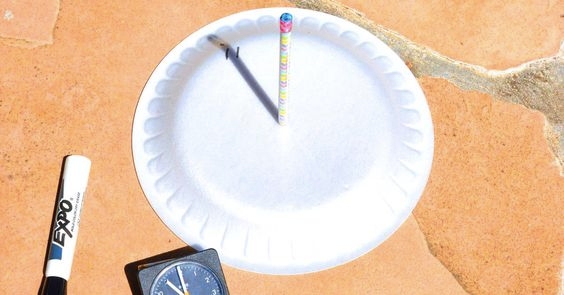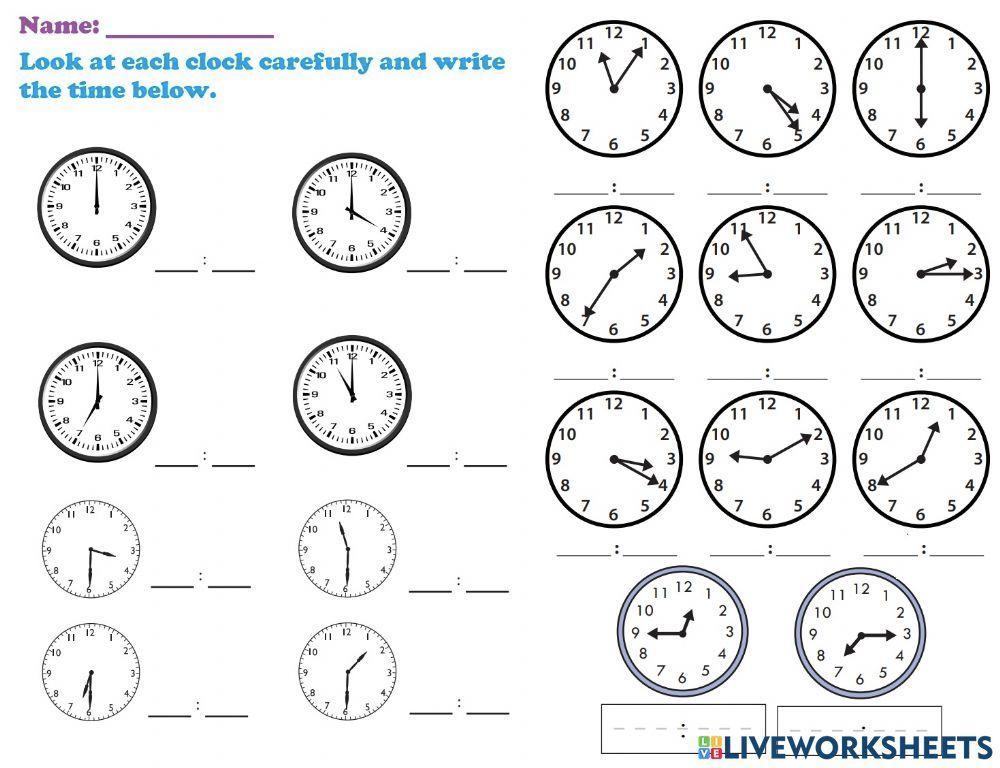As a parent of three kids, I’ve had my fair share of teaching moments – some easy, some not so much. One task that stood out was “how to teach telling time.” It sounds simple, but it’s a big step for a child. In this blog, I will talk about “how to teach telling time” in a way that’s easy and fun for kids. I’ve tried different methods with my children, and I want to share what worked and what didn’t. Whether you’re a parent or a teacher, I hope these tips will make the time-teaching journey easier for you and your kids.
Math & ELA | PreK To Grade 5
Kids see fun.
You see real learning outcomes.
Watch your kids fall in love with math & reading through our scientifically designed curriculum.
Parents, try for free Teachers, use for free
Learning to tell time can be tough for kids, but SplashLearn makes it easier and more fun. Sign up now and help your child master telling time with engaging and interactive methods!
11 Best Telling Time Activities For Kids
1. Interactive Online Games

Interactive online games are a fantastic resource for teaching time to kindergarten. These games are designed to be engaging and educational, helping kids learn to tell time in a digital format. They often include fun characters and scenarios, making the learning process enjoyable.
Here are some fun time games that can help your child understand time telling in a fun way:
Related Reading: Fun Free Games for Kids to Play Online
2. Time-Telling Bingo

Time-Telling Bingo turns learning into a game, making it one of the most engaging time activities. It’s great for teaching kids to recognize different times on a clock. This activity also encourages group interaction and helps in developing social skills.
How to do it:
Create bingo cards with different times shown on clock faces. Call out times, and kids will mark them on their cards. The first to get a line wins! This can be played in a classroom or at home with family.
Related Reading: What Is Hour Hand On a Clock? Definition, Examples, Facts
3. Colorful Clock Craft

This is one of the most creative clock activities for kindergarten. It helps kids learn about the clock’s face and its numbers through a fun art project. By making their clock, kids get hands-on experience in understanding how a clock works, which is great for their memory and recognition skills.
How to do it:
You’ll need a paper plate, colored paper, a marker, and a brad for the clock hands. Let the kids decorate the plate to make the clock face, then write the numbers. Attach the paper hands with the brad, and they have their clock!
Related Reading: 10-Minute Best Crafts for Kids to Make at Home
4. Story Time with Time

If you are looking for creative activities on how to teach time to kids, this can be a great option. By incorporating time-telling into storytelling, children learn to associate different times of the day with different activities. It helps them understand the concept of time in a narrative context, making it more relatable and memorable.
How to do it:
Create a story where the characters do different activities at specific times. As you read the story, pause and ask your child what time it is in the story. You can use a toy clock or a drawing to help them find the answer.
5. Time-Telling Worksheets

Worksheets are a great tool for reinforcing the lessons on time-telling. They offer structured practice, helping kids to consolidate their understanding of reading clocks. These printable sheets can range from basic exercises to more complex time-related problems.
Here are some printable time worksheets that can help your kid reinforce the concept of time:
Related Reading: Analog Clock – Definition, Clock Face, Clock Hands & More
6. Clock Puzzle Challenge
This activity combines the excitement of a puzzle with the educational aspect of time-telling. It’s perfect for enhancing problem-solving skills and understanding clock faces.
How to do it:
Create or buy puzzles with different clock faces showing various times. Challenge your child to complete the puzzle and then read the time shown on each completed clock face. For an added challenge, you can create clues or questions for each time, turning it into a mini treasure hunt of knowledge.
Related Reading: Fun Problem-Solving Activities for Growth Mindset
7. Flashcards Fun

Using flashcards is a classic method of telling time. It’s a fun way for kids to practice reading at different times. Flashcards can be used for quick daily practice and effectively reinforce what kids have learned.
How to do it:
Create flashcards with different times shown on clock faces. Show the cards to your child and ask them to tell the time. For variety, you can also ask them to draw their hands on a blank clock to match a written time.
8. Daily Routine Time Matching

Daily Routine Time Matching is a practical approach to teaching telling time. It connects learning to real life by linking daily activities like eating breakfast or going to bed with their corresponding times. This helps children understand the daily rhythm and the importance of time management.
How to do it:
Make a chart of your child’s daily routine with pictures representing different activities. Then, ask them to match these activities with the usual times. This can be done with drawings or printed pictures and a clock.
9. Sundial Creation

Sundial creation is a fun and educational way to teach kids about the ancient method of timekeeping. This activity not only teaches about time but also about the sun’s movement and basic astronomy.
How to do it:
You’ll need a flat plate or a round piece of cardboard, a small stick or a straw, some clay or playdough, and a marker. Fix the stick vertically in the center of the plate using the clay. On a sunny day, place the sundial outside and mark the shadow’s position every hour, labeling each mark with the corresponding time.
10. Clock Labeling Exercise

This is a basic activity to help kids learn the clock face and its components. It’s a great starting point for beginners in time-telling.
How to do it:
Give children a large image of a blank clock face. They should label the hours and minutes and identify where the hour and minute hands point for given times.
11. Time Quiz Show

A Time Quiz Show is a fun family activity that turns learning into a game. It’s a great way to review time-telling skills and involve the whole family in learning. This game can be tailored to suit the age and learning stage of the child.
How to do it:
Create a quiz with different time-telling questions. These can range from reading clock faces to calculating time intervals. Take turns being the quizmaster and the contestant. You can use buzzers for a real game show feel and small prizes for correct answers.
Related Reading: Best & Fun Math Projects for Students
Why Is Teaching Kids to Tell Time Important?
1. Development of Time Management Skills: When we start teaching telling time to our kids, we do more than just show them the clock. We’re helping them understand how to plan their day. They learn how long they can play before dinner or how much TV time they have. This is their first step in managing time, a skill they’ll use all their life.
2. Enhancing Mathematical Understanding: Telling time is also a great way to boost their math skills. It’s not just about reading the clock; it’s about understanding numbers, counting, and even basic arithmetic. When kids learn how to tell time, they also practice adding and subtracting minutes and hours, which is a fun way to get better at math.
3. Building Responsibility and Independence: Knowing how to read a clock helps kids feel more independent. They don’t always have to ask an adult; they can check the time themselves. This builds their confidence and sense of responsibility. It’s a big step for them to manage their activities and schedules.
4. Real-World Application: Teaching telling time has a lot of practical uses in everyday life. Whether it’s catching the bus on time, knowing when a TV show starts, or being on time for a friend’s birthday party, understanding time helps kids navigate their day-to-day activities more smoothly.
5. Cognitive Development: Learning to tell time is great for a child’s overall brain development. It’s not just about the hands on the clock; it’s about understanding the concept of time, which is abstract. Grasping this concept helps improve their problem-solving and reasoning skills, which are important in all areas of learning.
Conclusion
As we’ve explored various activities and methods on how to teach telling time, remember that each child’s journey is unique. Patience and creativity are key. Using these fun and engaging activities sets the foundation for a lifetime of time management and independence for your little ones.
Related Reading: How to Teach Multiplication to Kids: 15 Fun Ways
Frequently Asked Questions (FAQs)
At what age should children start learning to tell time?
Children can start learning the basics of telling time around the age of 5 or 6, when they begin to understand numbers and can simply grasp the concept of time.
How can technology help in teaching time-telling?
Through interactive apps and online games, technology can make learning to tell time more engaging and fun, offering visual and interactive elements that traditional methods might lack.
What are common challenges kids face when learning to tell time?
Common challenges include understanding the difference between the hour and minute hands, grasping the concept of time intervals, and applying their knowledge to real-world scenarios.
How can parents integrate time-telling lessons into everyday life?
Parents can integrate time-telling into daily routines, like asking what time it is during meals, setting activity timers, or using clocks during playtime to create a practical learning environment.
Are there specific tools or resources you recommend for teaching time-telling?
Tools like teaching clocks, flashcards, educational apps, and time-telling games can be very effective. Also, books and stories that incorporate time concepts are great for reinforcing lessons.















